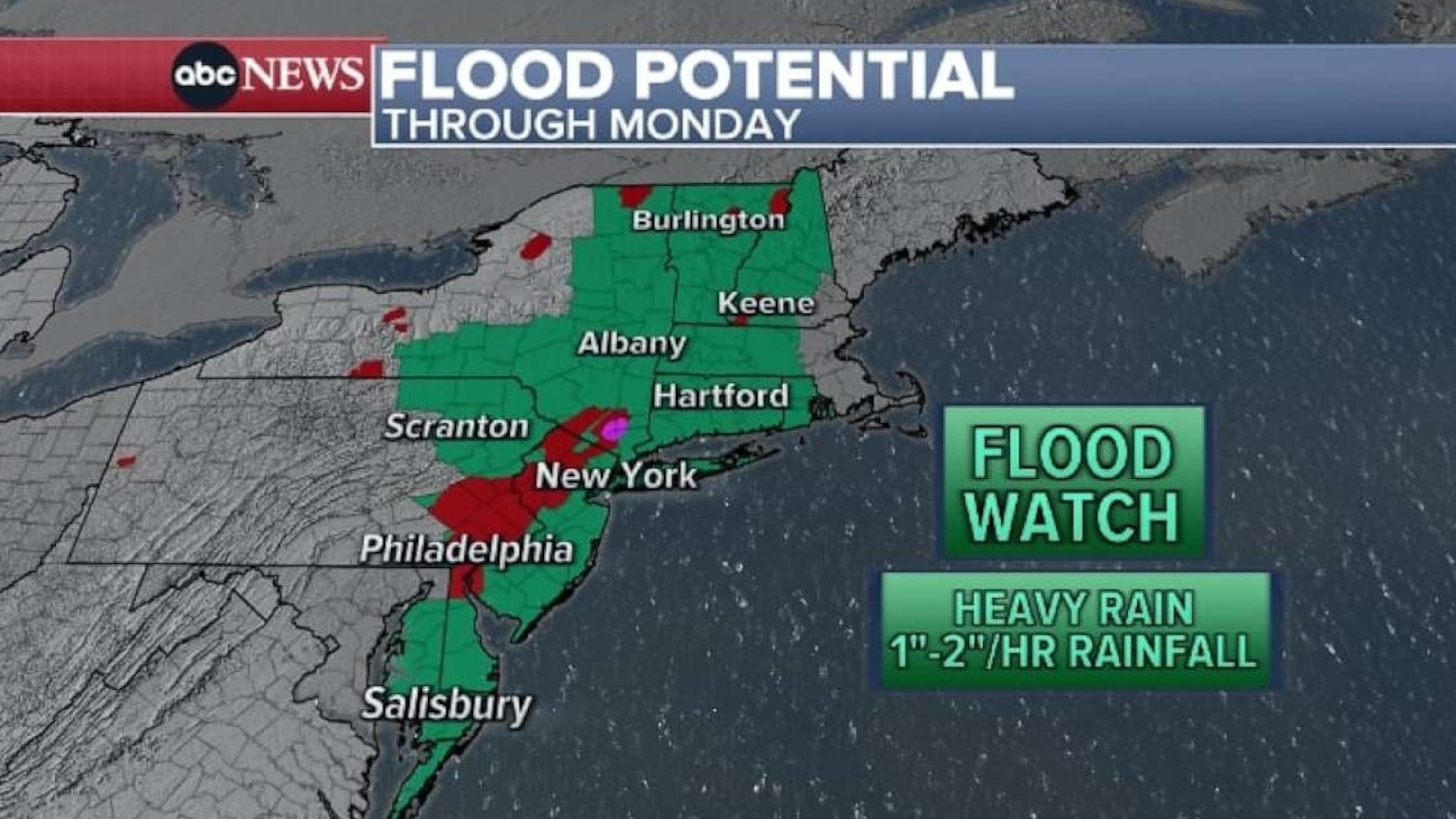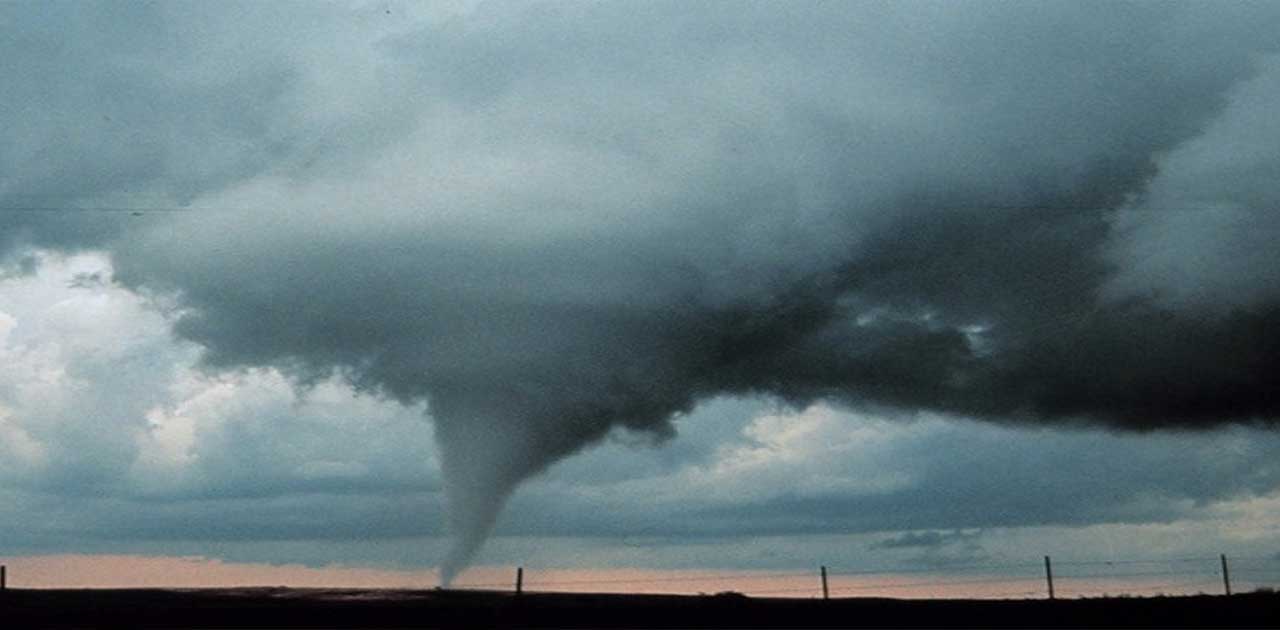Responding To A Flash Flood Emergency: Safety Tips And Procedures

Table of Contents
Understanding Flash Flood Risks and Warnings
Knowing the signs of an impending flash flood is the first step towards protecting yourself. Understanding the risks and how to stay informed are critical components of flood preparedness.
Recognizing Flash Flood Warning Signs:
Flash floods don't always announce themselves with dramatic fanfare. Instead, be vigilant for these subtle yet crucial indicators:
- Rapidly rising water levels: A sudden and significant increase in water levels in streams, rivers, or normally dry areas is a major red flag.
- Increased water flow in streams and rivers: Noticeably faster and stronger currents indicate a potential flash flood.
- Heavy rainfall in your area: Prolonged or intense rainfall, especially in short periods, significantly elevates the risk of flash flooding.
- Official warnings from weather services: Heed warnings from the National Weather Service (NWS) or your local meteorological authority. These alerts are your lifeline.
- Muddy water: A sudden change in water clarity, turning murky or brown, suggests increased sediment runoff, a common sign of flash flooding.
How to Stay Informed:
Staying informed is paramount in flash flood preparedness. Utilize these resources:
- Sign up for emergency alerts: Register with your local emergency management agency for timely alerts via text message, email, or mobile app. NOAA Weather Radio is another excellent source.
- Monitor local news and weather reports: Keep your radio or television tuned to local news channels for up-to-date weather information and emergency broadcasts.
- Check weather apps on your smartphone: Download reputable weather apps that provide real-time alerts and forecasts specific to your location.
- Understand the meaning of different weather alerts: Familiarize yourself with the difference between a "watch" (conditions are favorable for flash flooding) and a "warning" (flash flooding is imminent or occurring). A warning demands immediate action.
Preparing for a Flash Flood Emergency
Proactive preparation significantly enhances your chances of surviving a flash flood. This involves creating a comprehensive family emergency plan and protecting your property.
Developing a Family Emergency Plan:
A well-defined family plan is crucial:
- Establish a meeting place outside your home: Choose a designated spot where everyone will gather after evacuation.
- Designate an out-of-state contact person: This person acts as a central point of contact for family members to check in with each other.
- Pack an emergency kit with essential supplies: Your kit should include water, non-perishable food, a first-aid kit, medications, flashlights, batteries, a whistle, and blankets.
- Know your evacuation routes: Identify multiple escape routes from your home and community, especially those leading to higher ground.
Protecting Your Property:
Before a flash flood hits, take steps to minimize damage:
- Move valuables to upper floors: Elevate important documents, electronics, and furniture to reduce potential water damage.
- Bring outdoor furniture inside: Secure loose objects that could be swept away by floodwaters.
- Unplug electrical appliances: Prevent electrical shock by disconnecting appliances and electronics.
- If possible, move your car to higher ground: Parking your vehicle in a safe location prevents it from being damaged or swept away.
Actions to Take During a Flash Flood Emergency
When a flash flood warning is issued or you observe signs of imminent flooding, immediate action is necessary.
Evacuation Procedures:
Your life is paramount; evacuation is non-negotiable if instructed:
- Evacuate immediately if instructed by authorities: Obey evacuation orders without delay. Time is of the essence.
- Follow designated evacuation routes: Avoid shortcuts; designated routes are safer and better maintained.
- Never attempt to drive or walk through floodwaters: Even shallow water can hide dangers like hidden debris or strong currents that can sweep you away. The force of flood water is far stronger than you think.
- Seek higher ground: Find elevated areas away from floodplains and low-lying areas.
Staying Safe in Your Home:
If evacuation isn't possible, take these precautions:
- Move to the highest level of your home: Seek refuge on the upper floors or the roof if necessary.
- Go to a safe room away from windows: Find a strong interior room away from windows, which can shatter under the pressure of floodwater.
- Avoid contact with floodwater: Floodwater is often contaminated with sewage and hazardous materials.
- Listen for updates on the emergency radio: Stay informed about the evolving situation and any instructions from emergency services.
Post-Flash Flood Actions and Recovery
After the immediate danger subsides, the recovery process begins. This requires careful assessment and methodical cleanup.
Assessing the Damage:
Once the floodwaters recede, carefully assess the situation:
- Check for structural damage: Inspect your home for cracks, damage to foundations, or other structural weaknesses.
- Avoid entering buildings with standing water: Standing water may contain hidden dangers and contaminated materials.
- Report damage to your insurance company: Document all damages with photos and videos to facilitate the insurance claims process.
Cleaning and Restoration:
Cleaning up after a flood requires caution and proper procedures:
- Dispose of flood-damaged items properly: Follow guidelines for discarding contaminated materials; some items might require special handling.
- Clean and disinfect affected areas: Thoroughly clean and disinfect all surfaces to prevent mold growth and the spread of diseases.
- Be aware of potential hazards: Be mindful of potential hazards like mold, contaminated water, and damaged electrical systems.
- Contact professional help for significant damage: For extensive damage, seek the help of qualified contractors specializing in flood restoration.
Conclusion
Being prepared for a flash flood emergency significantly increases your chances of survival and minimizes damage. By understanding the risks, developing a proactive plan, and knowing the actions to take before, during, and after a flash flood, you protect yourself and your loved ones. Remember to always prioritize safety and heed the advice of emergency officials. Stay informed about flash flood warnings and learn how to respond effectively to ensure your family’s safety. Take the time today to create your flash flood emergency plan – your family’s safety depends on it!

Featured Posts
-
 April 2nd Tornado Count And Flash Flood Warnings Issued On April 4th 2025
May 26, 2025
April 2nd Tornado Count And Flash Flood Warnings Issued On April 4th 2025
May 26, 2025 -
 When His Son Needed 2 2 Million Treatment A Fathers Extraordinary Rowing Journey
May 26, 2025
When His Son Needed 2 2 Million Treatment A Fathers Extraordinary Rowing Journey
May 26, 2025 -
 See The Worlds Largest Rubber Duck In Myrtle Beach
May 26, 2025
See The Worlds Largest Rubber Duck In Myrtle Beach
May 26, 2025 -
 Siaran Langsung Moto Gp Inggris 2025 Sprint Race Link And Jadwal Pukul 20 00 Wib
May 26, 2025
Siaran Langsung Moto Gp Inggris 2025 Sprint Race Link And Jadwal Pukul 20 00 Wib
May 26, 2025 -
 Nach Oben Geht S Der Hsv Und Sein Bundesliga Triumph
May 26, 2025
Nach Oben Geht S Der Hsv Und Sein Bundesliga Triumph
May 26, 2025
Latest Posts
-
 202m Euromillions Jackpot A Life Of Luxury Awaits The Winner
May 28, 2025
202m Euromillions Jackpot A Life Of Luxury Awaits The Winner
May 28, 2025 -
 Massive 202m Euromillions Jackpot Your Path To Adele Style Riches
May 28, 2025
Massive 202m Euromillions Jackpot Your Path To Adele Style Riches
May 28, 2025 -
 Record Breaking 202m Euromillions Jackpot Your Chance At Adele Level Wealth
May 28, 2025
Record Breaking 202m Euromillions Jackpot Your Chance At Adele Level Wealth
May 28, 2025 -
 Discover The Shop Where A Winning Lotto Ticket Was Sold
May 28, 2025
Discover The Shop Where A Winning Lotto Ticket Was Sold
May 28, 2025 -
 Euromillions Winner Could Become As Rich As Adele 202m Up For Grabs
May 28, 2025
Euromillions Winner Could Become As Rich As Adele 202m Up For Grabs
May 28, 2025
